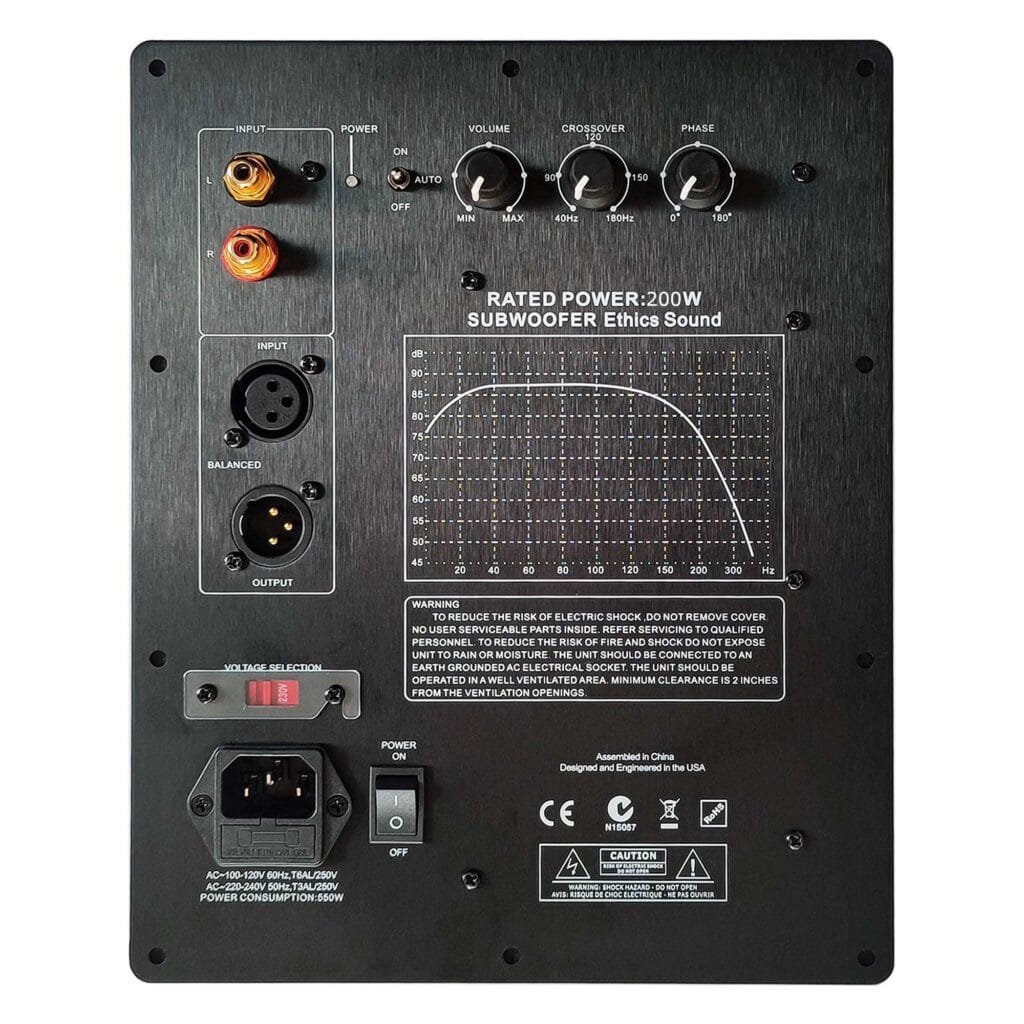
The Ultimate Guide to Subwoofer Amplifier Boards
For audiophiles and home theater enthusiasts, the pursuit of perfect sound is never-ending. While speakers often get the most attention, the true heart of a powerful low-frequency system lies in its engine: the subwoofer amplifier board. This critical component is responsible for driving your subwoofer to produce the deep, room-shaking bass that brings movies and music to life.
Understanding what a subwoofer amplifier board is and how to choose the right one can transform your hi-fi or home theater system from good to extraordinary.
What is a Subwoofer Amplifier Board?
At its core, a subwoofer amplifier board is a dedicated circuit board designed to power a passive subwoofer. Unlike a full-range amplifier that handles all frequencies, a mono subwoofer amplifier board focuses exclusively on the low-end spectrum, typically from around 20Hz to 200Hz. This specialization allows for optimized performance, greater power efficiency, and superior control over the subwoofer output.
These boards are the perfect solution for DIY enthusiasts looking to build a custom subwoofer enclosure or upgrade an existing one, offering a more flexible and often more powerful alternative to pre-assembled plate amplifiers.
Key Features to Consider in a Quality Amplifier Board
When researching amplifier reviews and specifications, keep an eye out for these critical features:
- Output Power (RMS): Measured in watts, this indicates the continuous power the amplifier board can deliver. A higher power rating (e.g., 200W into 4 Ohms) allows the board to drive larger subwoofers and achieve higher volumes with less distortion. Always prioritize RMS power over peak power ratings.
- Power Supply: Modern boards often use efficient switch-mode power supplies (SMPS). Look for features like a universal input (110V/220V switching) for global compatibility. A robust power supply ensures stable performance and a “large power margin,” meaning it can handle dynamic bass peaks without clipping.
- Output Topology: Many high-quality boards use MOS-FET or Class-D amplification. These technologies are known for high efficiency, low heat generation, and excellent control over the subwoofer driver, resulting in tighter, more accurate bass.
- Signal Processing: This is where advanced boards shine. Look for built-in features like:
- Low-Cut Filter (Subsonic Filter): This removes ultra-low frequencies (below 20-25Hz) that are inaudible and can waste power, potentially damaging the speaker. It converts that energy into the usable bass range.
- Crossover / Low-Pass Filter: Essential for blending the subwoofer’s output with your main speakers.
- Phase Control: Allows you to synchronize the bass waves with your main speakers for a seamless soundstage.
- Bass EQ: Advanced algorithms can boost specific frequencies to compensate for room acoustics, delivering a punchier and more impactful bass response.
A Recommended Board for Serious Bass
For those seeking a powerful and feature-rich solution, one standout option is the 110/220V Mono 200W Subwoofer Digital Amplifier Board. This board exemplifies the technical advancements discussed above.
It’s designed as a real pure bass amplifier, focusing solely on delivering strong, clean subwoofer output. Its high-efficiency half-bridge power supply and MOS-FET output stage provide amazing control and power, with a very low distortion rate. A key feature for enthusiasts is its dynamic EQ algorithm and dedicated low-cut filter, which optimizes energy for the critical 25Hz-60Hz range, making bass sound endless and full of energy. It also includes switches for different subwoofer enclosure types (ported or sealed), making it incredibly versatile for various DIY projects.
You can find detailed specifications and purchase this particular subwoofer amplifier board here: 110/220V Mono 200W Subwoofer Digital Amplifier Board
How to Integrate an Amplifier Subwoofer Board into Your System
Integrating a subwoofer amplifier board is a straightforward process for any DIYer:
- Source a Passive Subwoofer Driver: Choose a driver that matches the power handling and impedance of your amplifier board.
- Build or Use an Enclosure: The enclosure design (sealed, ported) dramatically affects the sound. The recommended board above has switches to optimize performance for either type.
- Connect the Audio: Run a line-level signal (RCA cable) from your AV receiver’s or stereo amplifier’s subwoofer output to the input on the amplifier board.
- Connect Power and Speaker: Wire the passive subwoofer driver to the board’s output terminals and connect the power cable.
- Fine-Tune: Use the board’s controls (crossover, phase) to blend the bass perfectly with your main speakers.
Conclusion
Investing in a high-quality subwoofer amplifier board is the most effective way to unlock the full potential of your low-frequency system. By focusing on key specs like power, topology, and built-in processing, you can select a board that delivers the powerful, controlled, and deep bass that elevates every movie and music listening session. Whether you’re a seasoned hi-fi modder or a beginner, the right amplifier subwoofer board is the key to a truly immersive audio experience.
